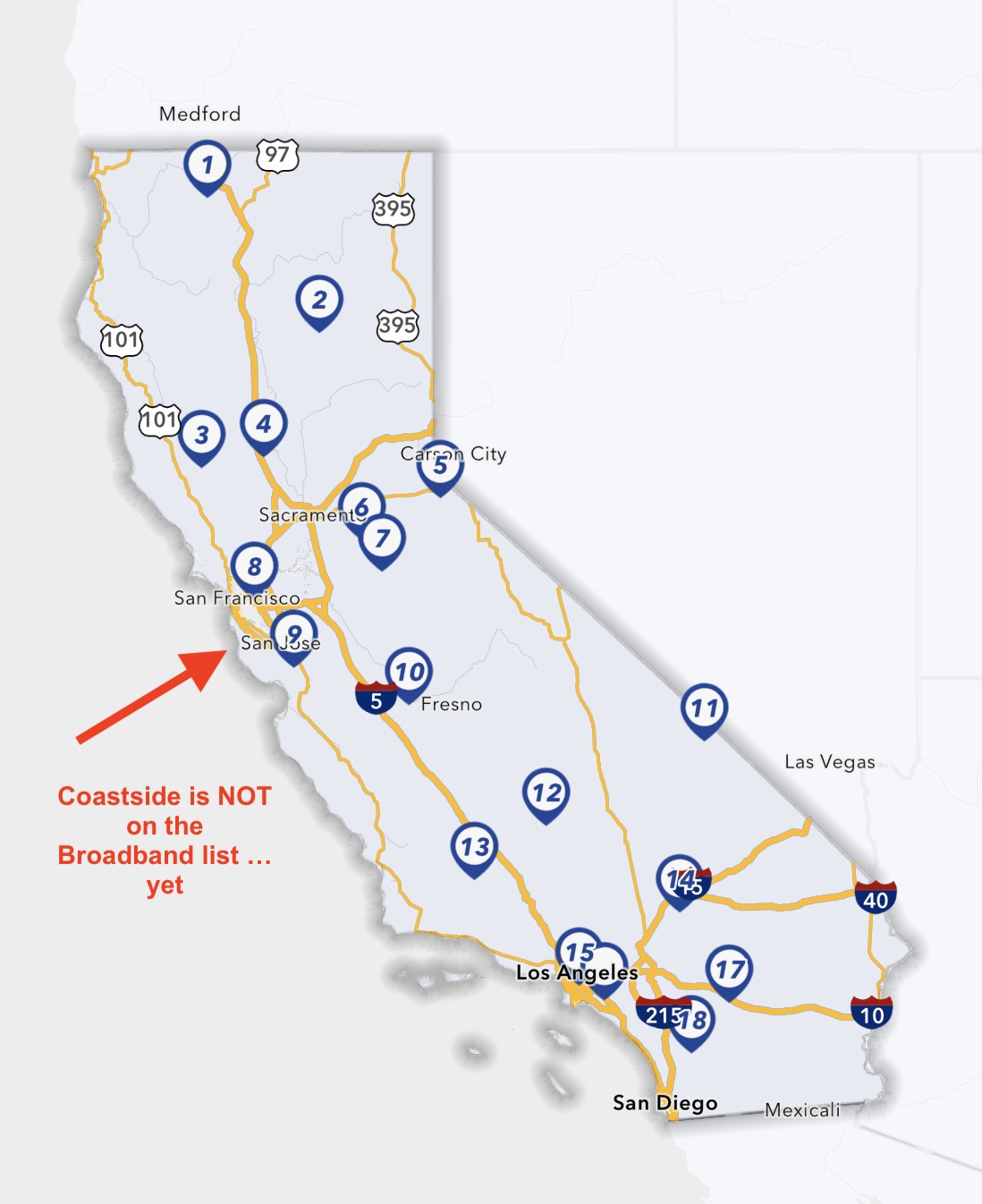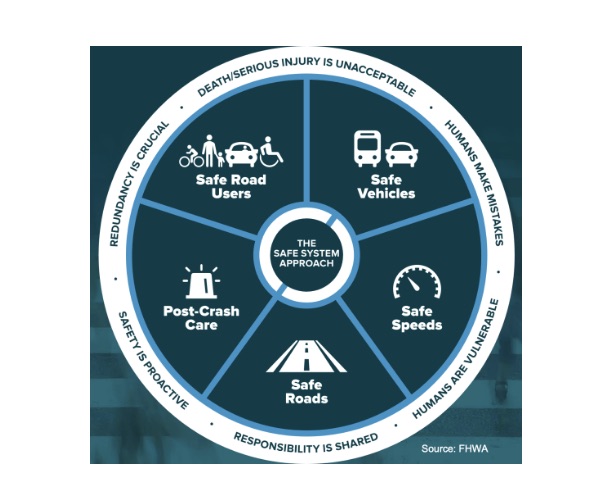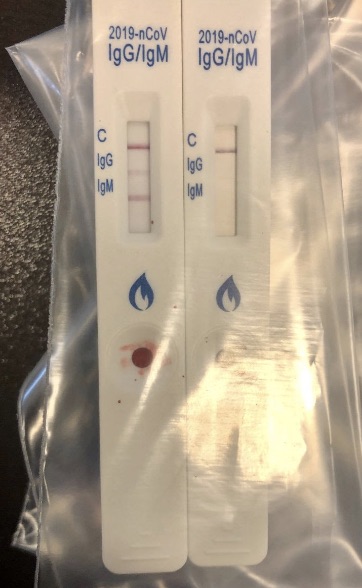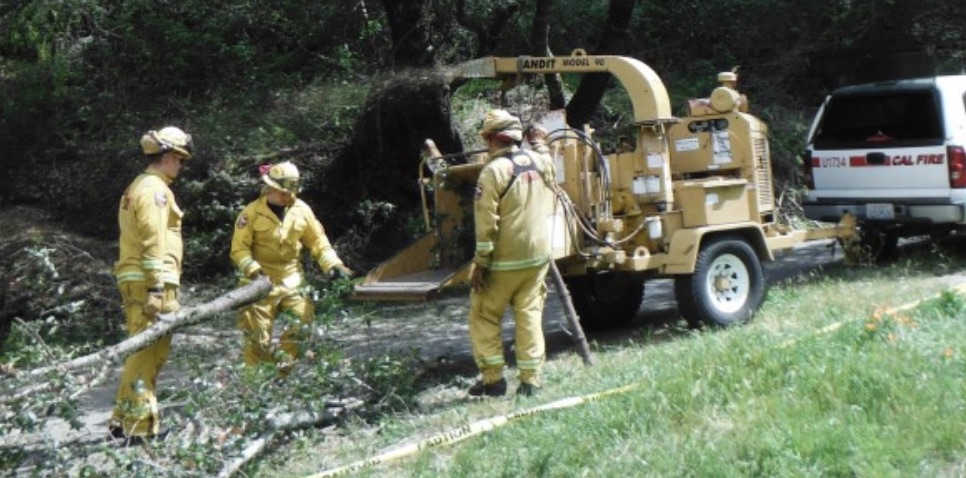|
Getting your Trinity Audio player ready...
|
LINKS. Coastside Emergency Action Program (CEAP) Presentation/Workshop with David Man – District Division Chief, Division of Traffic Operations – Caltrans Bay Area.
David’s topic was “Caltrans Operations & Safety”
David gave a jam-packed presentation beginning with an overview of the Caltrans District 4 (Bay Area) issues of concern. Their priority is Safety.
He explained the “Smart Corridor” approach of automated, real-time intelligent traffic management systems.
446 crashes have been documented on Hwy. 1 between HMB and Pacifica in the recent three years. 33% were rear end collisions
29% were caused by speeding
13% due to wet pavement.
All cause traffic delays and bottlenecks.
Interestingly, 20% of crashes are “secondary”. Every minute of incident delay multiplies traffic queues by a factor of 4. The likelihood of a secondary crash increases by 2.8% for each minute a primary crash is not cleared.
Caltrans “Safe System Approach” aims to eliminate fatal and serious injuries by doubling down on safety measures proven to work and to accelerate the use of advanced technologies like smart intersections and variable message signs. These measures will improve traffic flow, driver information, and pedestrian safety.
Highway 1 has been identified as a priority corridor for upgrades to the broadband communications system or “Middle-Mile Broadband Initiative”. This initiative, signed into law in 2021, aims to bring equitable high-speed broadband service to all Californians by 2026.
David also discussed Wildfire Preparedness and Vegetation Management.
You can reach District 4 Public Information Office at (510) 286-4444 and make a Customer Service Request at https://csr.dot.ca.gov/
Middle-Mile Broadband Initiative ~ Initial Project Locations
Smart Corridor
The San Mateo County Smart Corridor project is one of countywide significance. The Smart Corridor is designed to improve mobility of local arterial streets by installing Intelligent Transportation System (ITS) equipment, such as an interconnected traffic signal system, close circuit television (CCTV) cameras, dynamic message signs, and vehicle detection system, on predefined designated local streets and state routes. The ITS infrastructure provides local cities and Caltrans with day-to-day traffic management capabilities in addressing recurring and non-recurring traffic congestion.
The Smart Corridor project maximizes efficiency of the existing transportation network, smoothing traffic flow and leading to improved safety and reduced travel times. Concurrently, the project minimizes the impact of freeway incident traffic on local streets through proactive traffic management. The segments between City of San Bruno at the northern limits to the Santa Clara County line in the City of East Palo Alto has been completed. The South San Francisco segment is expected to be in the construction phase starting in spring of 2021. The Northern Cities project, consisting of the Cities of Daly City, Brisbane and Colma, is currently in the environmental clearance phase.
The project is funded using a combination of Transportation Fund for Clean Air fund from the Bay Area Air Quality Management District, Traffic Light Synchronization Program, Measure M ($10 Vehicle Registration License fee in San Mateo County), and State Transportation Improvement Program (STIP) grant.
For more project information, please contact Kaki Cheung, C/CAG Program Director, at kcheung1@smcgov.org.
Map of San Mateo County Smart Corridor Project Limit and Status
Northern Cities Expansion Project Factsheet
Caltrans Director’s Policy Commits to Safe System Approach to Eliminate Deaths and Serious Injuries on California Roadways
District: Headquarters
Contact: Will Arnold
Contact: Tamie McGowen
Phone: (916) 956-0633
Sacramento — Building on its longstanding commitment to safety, Caltrans today is unveiling a new Director’s Policy on Road Safety which commits the department to the Safe System approach and reaffirms the vision of reaching zero fatalities and serious injuries on state highways by 2050.
“Caltrans is fully committing to a fundamental shift in road safety and is laying the framework for significant reductions in roadway deaths and injuries. We play an important role in the building and maintaining of the state’s highways. With the numbers of serious injuries and deaths trending the wrong way, now is the time to focus even more on what we can do to save lives and work collaboratively with other stakeholders who play a role in roadway safety.”
California and the rest of the nation are seeing an increase in fatalities and serious injuries on the roadways. In California, more than 3,600 people die each year in traffic crashes and more than 13,000 people are severely injured. More than 3,200 people died on the state’s roadways in the first nine months of 2021 – a 17 percent increase from the previous year.
To address this trend, Caltrans is aligning departmental activities, as appropriate, with the Safe System approach, which identifies several interconnected elements to achieving a vision of zero fatalities and serious injuries – safe road users, safe roads, safe speeds, safe vehicles, and post-crash care. As part of this policy, Caltrans commits to:
- Prioritizing “safety first” in highway planning, operation, construction and maintenance.
- Focusing on eliminating the most serious crashes, rather than all crashes.
- Eliminating race-, age-, ability- and transportation mode-based disparities in road safety outcomes by addressing historic and current barriers to transportation access and safety.
This policy takes steps to further institutionalize a shift that began in 2020, as state transportation leaders recognized a bolder and more focused approach was necessary to combat the troubling rise in fatalities and serious injuries on California roads. The state’s 2020-24 Strategic Highway Safety Plan – managed by Caltrans and involving more than 400 stakeholders – was updated to include the Safe System approach.
This policy also aligns with the U.S. Department of Transportation’s National Roadway Safety Strategy released in January, which set the first national goal of zero roadway fatalities and recognizes the Safe System approach as encompassing a range of roadway safety programs and stakeholders.
“The U.S. Department of Transportation has adopted the Safe System Approach that guides our safety actions within the recently announced National Roadway Safety Strategy to address the national crisis in roadway fatalities and serious injuries. We commend Caltrans for adopting this approach and working to bend the curve on roadway fatalities to zero.”
The Safe System approach is based on the following principles:
- Eliminate death and serious injury: While no crashes are desirable, the Safe System approach prioritizes addressing crashes that result in death and serious injuries.
- Humans make mistakes: People on the road will inevitably make mistakes that can lead to crashes. The transportation system is designed and operated to accommodate human mistakes and injury tolerances, and avoid deaths and serious injuries.
- Humans are vulnerable: Crash forces contribute to deaths and serious injuries. Minimizing speeds and impact angles reduces the risk of death and serious injuries.
- Responsibility is shared: All stakeholders, including road users, vehicle manufacturers, policy makers, law enforcement, licensing and education entities, those in road design and maintenance, and others must commit to working together to reduce fatal and serious injury crashes to zero. No one entity can achieve this goal alone, and it will take the coordinated effort of stakeholders working across a variety of disciplines to improve safety outcomes.
- Redundancy is crucial: Reducing risk requires that all parts of the transportation system are strengthened, so that if one element fails, there are still multiple layers of protection.
- Safety is proactive and reactive: Through both proactive and reactive safety efforts such as road safety audits, traffic investigations, road monitoring, flexible design, and others help identify potential areas for safety enhancement to reduce fatal and serious injury crashes.
Caltrans’ adoption of the Safe System approach builds on its ongoing work to improve safety on the state’s transportation system. In December, Caltrans adopted a new policy for all new transportation projects it funds or oversees to include “complete street” features that provide safe and accessible options for people walking, biking and taking transit.
For more information about Caltrans’ new safety guidelines, visit its Safety Program webpage.
Zero Deaths – Saving Lives through a Safety Culture and a Safe System
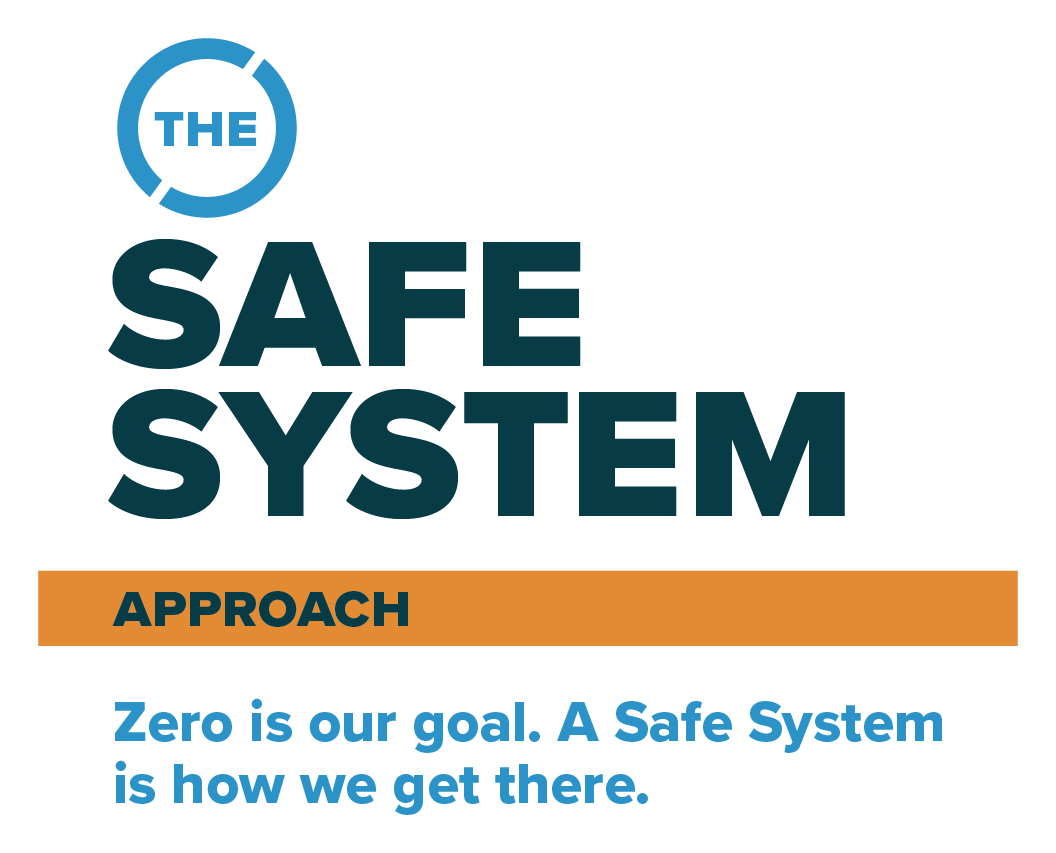
Zero Deaths and Safe System
From the U.S. Department of Transportation: Federal Highway Administration
The zero deaths vision acknowledges that even one death on our transportation system is unacceptable and focuses on safe mobility for all road users. This idea was first adopted in Sweden in 1997 as “Vision Zero” and since then has spread around the world.
Reaching zero deaths requires the implementation of a Safe System approach, which was founded on the principles that humans make mistakes and that human bodies have limited ability to tolerate crash impacts. In a Safe System, those mistakes should never lead to death. Applying the Safe System approach involves anticipating human mistakes by designing and managing road infrastructure to keep the risk of a mistake low; and when a mistake leads to a crash, the impact on the human body doesn’t result in a fatality or serious injury. Road design and management should encourage safe speeds and manipulate appropriate crash angles to reduce injury severity.
There are six principles that form the basis of the Safe System approach: deaths and serious injuries are unacceptable, humans make mistakes, humans are vulnerable, responsibility is shared, safety is proactive, and redundancy is crucial.
Making a commitment to zero traffic deaths means addressing all aspects of safety through the following five Safe System elements that, together, create a holistic approach with layers of protection for road users: safe road users, safe vehicles, safe speeds, safe roads, and post-crash care.
The Safe System approach requires a supporting safety culture that places safety first and foremost in road system investment decisions. To achieve our zero deaths vision, everyone must accept that fatalities and serious injuries are unacceptable and preventable.
Learn more about the Safe System approach from the following materials:
FHWA – Safe System Special Edition of Public Roads Magazine
FHWA – Safe System Approach flyer and Safe System Approach presentation
Safety Compass Article – Safe System–An Approach Toward Zero Traffic Deaths
PIARC – The Safe System Approach
Perth, Australia – video explains how redundancy in Safe System can save lives
Other Resources
Coastside Emergency Action Program
The Coastside Emergency Action Program is a disaster preparedness committee bringing together key Half Moon Bay Coastside organizations in order to sufficiently prepare for a disaster. In the event of a disaster, the Coastside community will have to be self-sufficient for the first 48 hours, at least.
This committee is the only VOAD (Volunteer Organization Active in Disaster) in San Mateo County and has been dubbed “The Trail Blazers” by the state of California.
Committee Chair: David Cosgrave
Meets: First Friday of the month at 9:00am via Zoom
Click here to sign up for SMC Alert, an alert notification system for San Mateo County used to immediately contact you during urgent or emergency situations with useful information and updates by sending you an email and/or text message.



